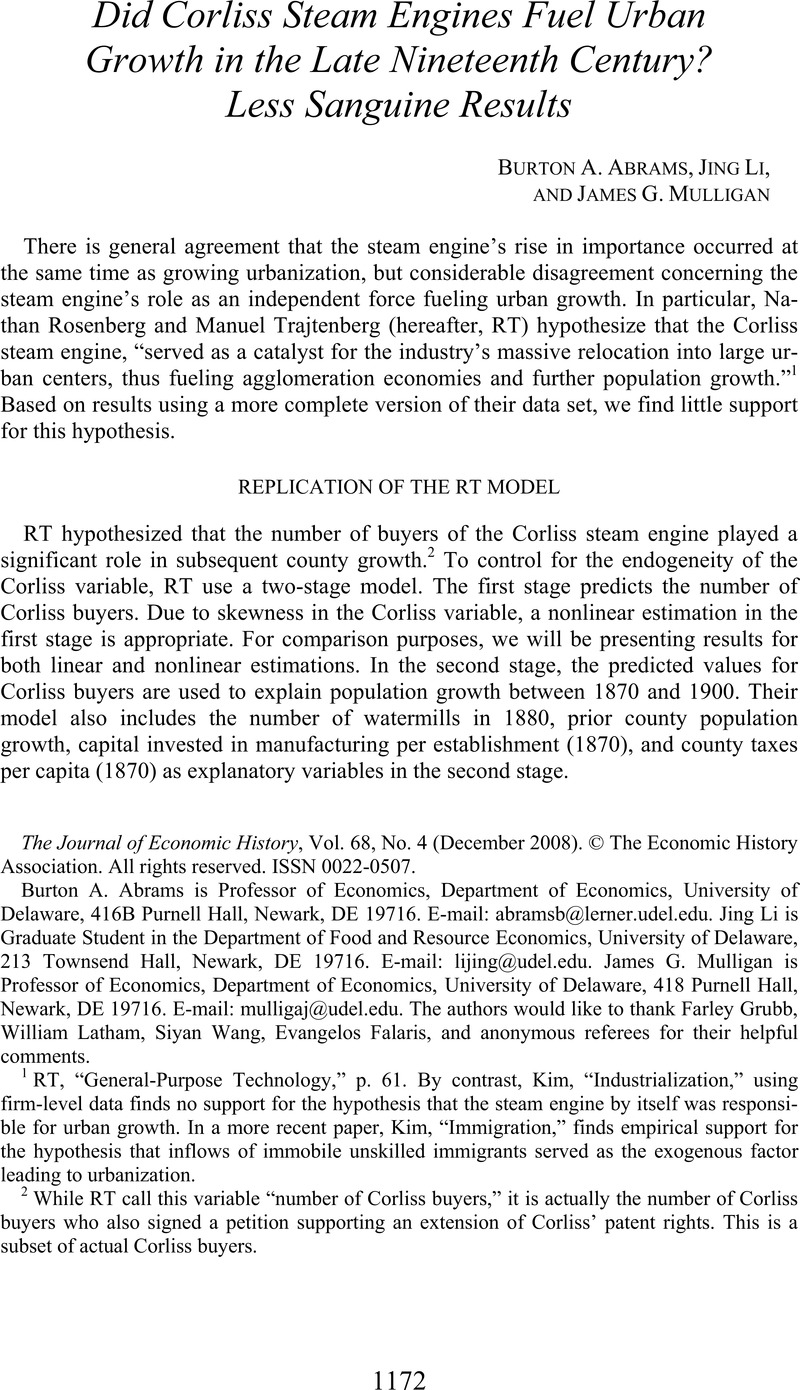Crossref Citations
This article has been cited by the following publications. This list is generated based on data provided by Crossref.
Abrams, Burton A
Li, Jing
and
Mulligan, James G
2013.
Capital Intensity and US County Population Growth During the Late 19th Century.
Eastern Economic Journal,
Vol. 39,
Issue. 1,
p.
18.
Atack, Jeremy
Margo, Robert A.
and
Rhode, Paul W.
2022.
Industrialization and urbanization in nineteenth century America.
Regional Science and Urban Economics,
Vol. 94,
Issue. ,
p.
103678.
Ducruet, César
and
Itoh, Hidekazu
2022.
The spatial determinants of innovation diffusion: Evidence from global shipping networks.
Journal of Transport Geography,
Vol. 101,
Issue. ,
p.
103358.
Khan, B. Zorina
2023.
Handbook of Cliometrics.
p.
1.
Khan, B. Zorina
2024.
Handbook of Cliometrics.
p.
2273.





